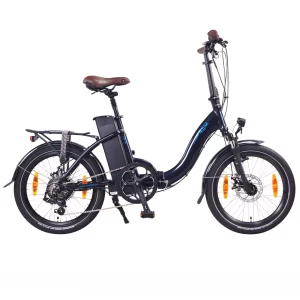How to Choose the Right Size Electric Bike: A Comprehensive Guide
Introduction
Electric bikes, also known as e-bikes, have gained immense popularity in recent years. They provide an eco-friendly and efficient mode of transportation, making commuting easier and more enjoyable. However, when it comes to purchasing an electric bike, one of the most crucial factors to consider is its size. Riding a properly sized e-bike ensures comfort, control, and an overall better riding experience. In this article, we will delve into the details of choosing the right size electric bike to help you make an informed decision. How do I know what size electric bike to buy?
Understanding Frame Sizes
The first step in determining the correct size for your electric bike is understanding frame sizes. E-bike frames come in various sizes, typically measured in inches or centimeters. The frame size represents the length of the seat tube, which is the vertical tube that connects the pedals to the saddle. It’s important to note that frame sizes can differ across manufacturers, so it’s always recommended to refer to the manufacturer’s sizing chart.

Consider Your Height
Your height is a crucial factor in determining the appropriate frame size. Different frame sizes are designed to accommodate different height ranges. To find the right size, measure your height accurately and compare it with the manufacturer’s size chart. Keep in mind that the size chart is a general guideline, and personal preference and body proportions also play a role in finding the perfect fit. How do I know what size electric bike to buy?
Standover Height
Standover height is another critical measurement to consider. It refers to the distance between the top tube of the bike’s frame and the ground when you’re standing over the bike with your feet flat on the ground. For most riders, having around 1-2 inches (2.5-5 cm) of clearance between the top tube and your inseam is ideal. This clearance ensures that you can comfortably stand over the bike and maintain stability while stationary.
Ergonomics and Reach
Aside from frame size, the ergonomic fit and reach of the electric bike are important for a comfortable riding experience. Ergonomics involve the bike’s handlebar height, saddle position, and overall geometry. These factors directly impact your riding posture and comfort on the bike.
Handlebar Height and Width
The handlebar height and width play a significant role in determining your riding posture and comfort. The handlebars should be at a height that allows you to maintain a relaxed and natural position, with your arms slightly bent. If the handlebars are too low, it can strain your back, neck, and shoulders. On the other hand, if they are too high, it may lead to wrist discomfort and lack of control.
Handlebar width is also important. The width should match the width of your shoulders, allowing for a comfortable grip and effective control over the bike. If the handlebars are too narrow or too wide, it can cause discomfort and affect your handling of the bike. For eBike specialist ncm ebikes see here.

Saddle Position
The saddle position is another critical aspect of bike fit. It should be adjusted to ensure proper leg extension and optimal pedaling efficiency. When seated on the bike, your leg should have a slight bend at the knee when the pedal is at the lowest position. Adjust the saddle height and fore-aft position accordingly to achieve this optimal leg extension.
Geometry and Riding Style
The geometry of the electric bike also affects the overall fit and feel. Different bikes have varying geometries, such as the length and angle of the top tube, seat tube angle, and chainstay length. These factors determine the bike’s responsiveness, stability, and handling characteristics. It’s important to consider your riding style and preferences when selecting the right geometry.
If you prefer a more aggressive and aerodynamic riding position, a bike with a longer top tube and a more compact frame may be suitable. On the other hand, if you prefer a more upright and comfortable riding position, look for a bike with a shorter top tube and a relaxed geometry.
Test Rides and Professional Fit Services
While understanding the sizing charts and measurements is important, nothing beats a test ride to truly assess the fit and comfort of an electric bike. Many bike shops and manufacturers offer test ride opportunities, allowing you to experience the bike firsthand and see if it suits your body type and riding style.
Additionally, if you’re unsure about the sizing or want a more personalized fit, consider seeking the assistance of a professional bike fitter. A professional fitter can assess your body proportions, flexibility, and riding goals to recommend the perfect electric bike size and make adjustments to optimize your riding position.
Consider Your Future Needs
Lastly, it’s essential to consider your future needs and aspirations when choosing the size of your electric bike. If you plan on using the bike for long-distance touring or off-road adventures, you may prefer a larger frame size for added stability and comfort. Alternatively, if you primarily intend to use the bike for urban commuting or leisurely rides, a smaller and more nimble frame size may be more suitable.
Conclusion
Choosing the right size electric bike is crucial for a comfortable and enjoyable riding experience. By considering factors such as frame size, standover height, ergonomics, and geometry, you can find an e-bike that suits your body type, riding style, and future needs. Remember to consult the manufacturer’s sizing chart, take test rides whenever possible, and seek professional fit services if needed. With the right-sized electric bike, you’ll be ready to hit the road with confidence and embark on countless adventures.




